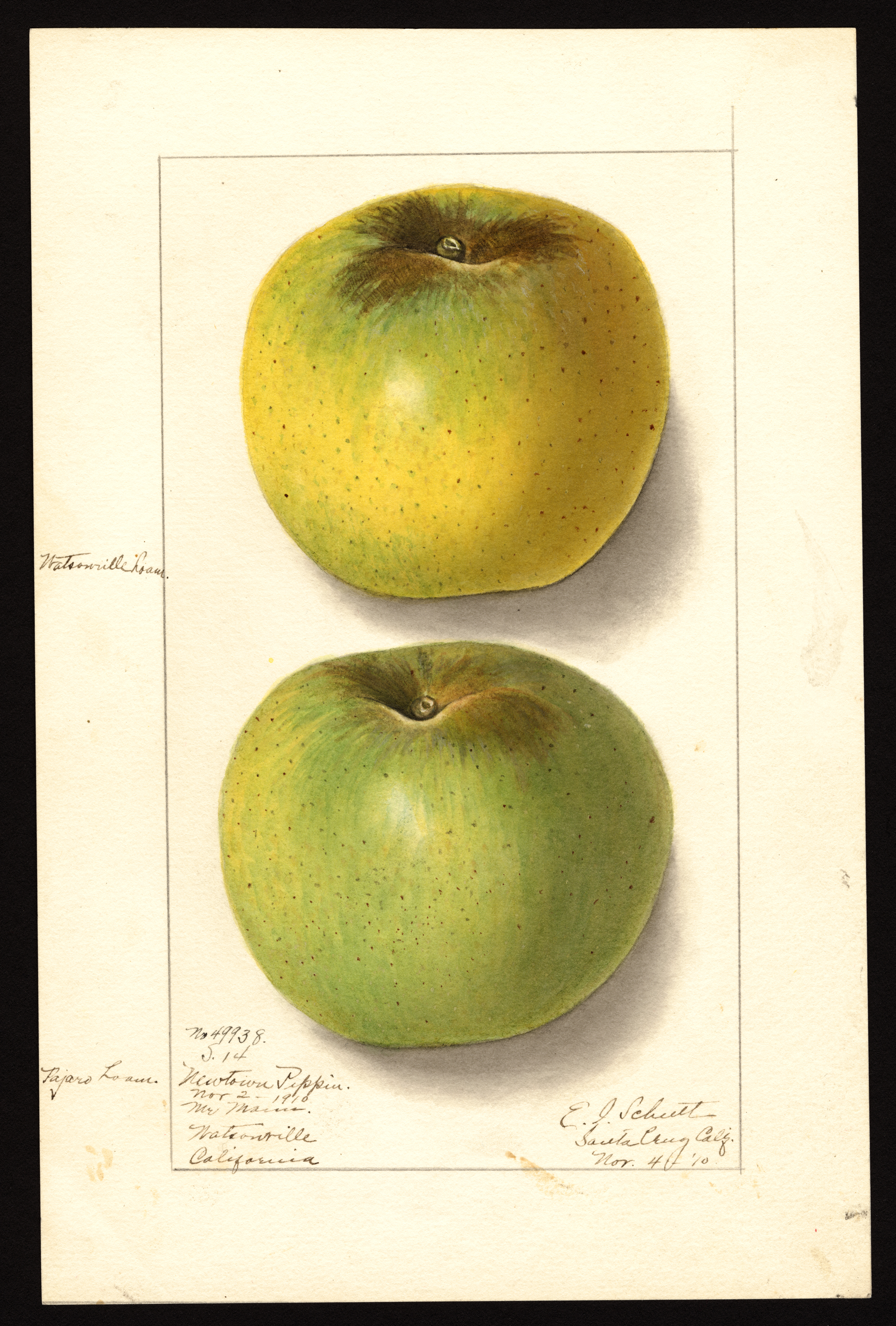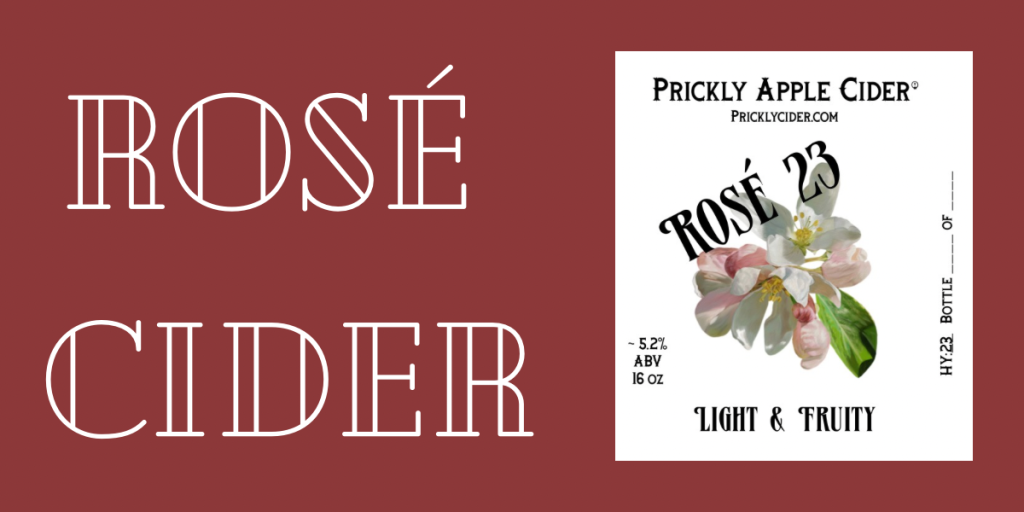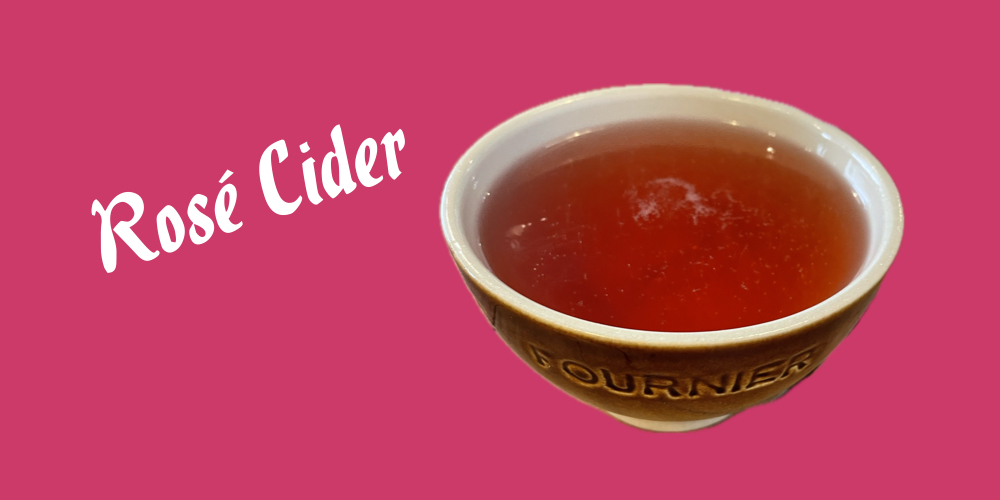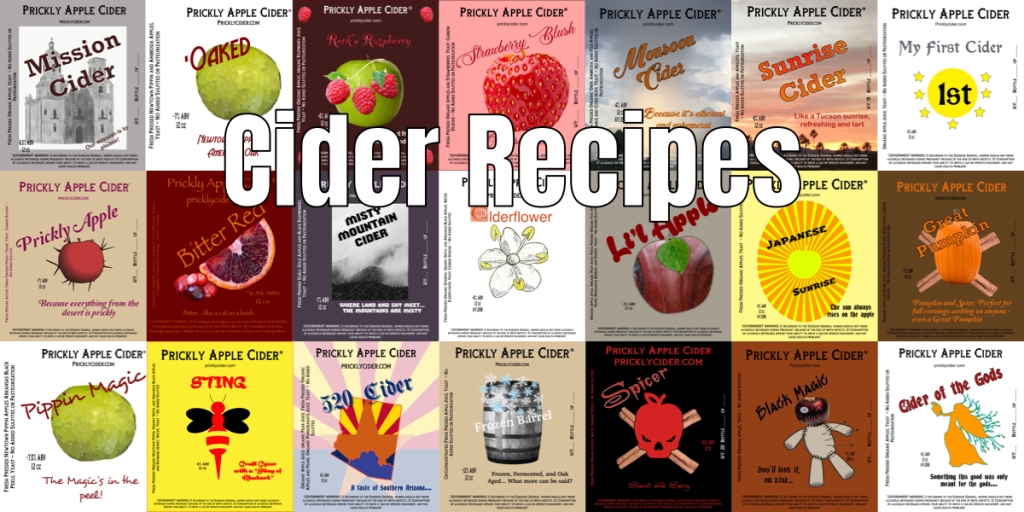Pippin Magic has been one of my favorite hard ciders of the 2019 harvest. I used Newtown Pippin apples, which are also known as Albemarle Pippin apples. The apple was a chance seedling, grown from an apple seed or pip, found in Newtown, New York in the late 1600s or early 1700s. It was taken to the Piedmont area of Virginia, Albemarle Count, and cultivated by several well known people including George Washington and Thomas Jefferson. Originally, it was a dessert apple that could be eaten fresh or used for cooking. It makes a great pie and can be quite acidic but also very aromatic. It’s now a sought after heirloom cider apple. Often carrying a little russet in the cavity, the apples are green to greenish yellow. The apples I pick are smaller, very firm, and tart but also have a high level of sugar. This sugar helps to balance the acid. Here are some vintage watercolors of the Newtown Pippin apple from the U.S. Department of Agriculture Pomological Watercolor Collection. Rare and Special Collections, National Agricultural Library, Beltsville, MD 20705
The apples that I’ve pressed have ranged in sugar from 1.065 to 1.072 SG and the total acid from 9.5 to 16 grams per liter of malic acid. The apple has some tannins but it’s not a bittersweet. This is where the magical part of Pippin Magic comes into play. To increase the level of tannins and add some color, I fermented this hard cider on the peels of several the Arkansas Black apples.
You read that correctly. After reading some articles about how tannins in apples are concentrated in the peels, the seeds, and core, I decided to follow the lead of winemakers. If red wines are made red by fermenting on the skins, why would I throw out the most important element for adding tannins: the peel. In fact, why not maximize the use of it by adding peels from apples with higher tannins to juice with apples with lower tannins. In this way, I get more bang from my tannin rich apples. Ultimately, that is the magic of my Pippin Magic and Black Magic hard cider recipes.
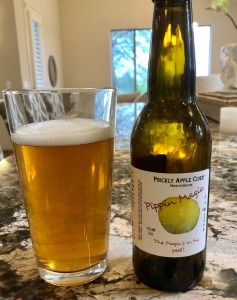
Pippin Magic Hard Cider Recipe
Servings: ~1 gallon
Ingredients:
- 4-6 Arkansas Black Apple Peels
- 16 Pounds Newtown Pippin Apples
- 1/2 Teaspoon Pectic Enzyme
- 2-3 Grams Mangrove French Saison Yeast (M29)
Steps:
- Peel the Arkansas Black apples and place the peels in the bottom of the fermenter with the pectic enzyme. Note: You can freeze the peels and take them out when you want to use them. The peels have the highest level of tannins in the apple, and if you don’t have access to a lot of heirloom or cider apples, adding peels to batches can boost the tannins. You can press the Arkansas Black apples and make Black Magic hard cider.
- Press and strain the Newtown Pippin apples into the fermenter.
- Add Mangrove yeast, seal with airlock, and ferment until it stops bubbling and begins to clear (usually 2-3 weeks).
- Rack the cider and age for at least 4 weeks but I recommend at least 8 weeks. Note: The peels will now be colorless with the tannins and color now transferred to the hard cider.
- This hard cider should fall clear with time and the tannins in it will benefit from age so you can’t really age it too long.
- When I’m ready to package this hard cider, I filter this through a 1.0 micron filter just to polish it, but not strip out the flavors or color. Cold crash it if you want to clear it more.
- Once filtered, force carbonate the cider to 2.75 volumes of CO2, which is considered sparkling and what will help give it the head on the above picture.
- Package, chill, and serve.

This hard cider pairs exceptionally well with comfort food like grilled cheese. It would also be great with hamburgers, sausage, and even a nice steak. These foods will match well with the tart and acidic nature of the Newtown Pippin, and the astringent and phenolic characteristics imparted by the Arkansas Black peels. The carbonation of this cider will also help to cleanse the palate of the fats and bold flavors found in most comfort food.
Did you enjoy this article? Follow me so you can get more hard cider recipes and tips as well as ideas for experiencing hard cider. Also, if you want to learn more about making hard cider, get my book. It covers all things hard cider as well as food and cider pairings like above.
It is that simple and there is no catch. I’m not going to sell your email or bombard you with unwanted requests to buy things. It will also give me a way to respond if you have questions about hard cider or need help with a batch. Stay safe, drink cider!
